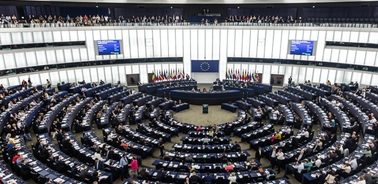- Home
- Blue Talks
- Nine Key Stats On Gender Inequality In Politics
Nine key stats on gender inequality in politics

The numbers tell the story: gender balance in political power remains a long way off
The Ideal:
50/50 – In 1995, the UN’s Beijing Declaration and Platform for Action was adopted by 189 member states, committing signatories to “establishing the goal of gender balance in governmental bodies…with a view to achieving equal representation of women and men, if necessary through positive action, in all governmental and public administration positions.” The UN hailed the agreement as “the most progressive blueprint ever for advancing women’s rights.”
The Reality:
7% – Approximate proportion of global heads of state that are women. Much has been written about the relative success of female leaders in managing the Covid-19 pandemic, but despite the efforts of high-profile figures such as Germany’s Angela Merkel and New Zealand’s Jacinda Ardern, women are drastically underrepresented at the top tables of power.
25% – The proportion of national parliamentarians that are women. The 2018 elections in the US saw record numbers of women run for office – records that were broken again in 2020. In the UK, the 2019 general election returned 220 women MPs, also a record. Despite these surges, women currently make up just 34% of MPs in the UK, and 27% of Congress in the US. Women account for 31% of national parliamentarians across Europe (and represent 39% of MEPs). The trends are positive and demonstrate progress – but also how much work is still required, even in liberal democracies, to achieve gender parity.
21% – The proportion of government ministers globally that are women. While the previous figure highlights the challenge faced by women in reaching elected office, the ministerial figure demonstrates the barriers to power that remain once they get there.
5 – UN research shows that the five portfolios most commonly held by women ministers are related to caring for society and the planet: Family/Children; Social Affairs; Environment/Energy; Employment/Labor; and Women’s Affairs/Equality. Citing the disparity in women ministers in certain portfolios, Politico stated, “what really matters is the power women can wield and the influence they can exert over politics and policy – that is, the size of their budget and their role in government…[W]omen are still underrepresented in ‘hard’ portfolios like defense, finance and foreign affairs.”
130 – The number of years the UN estimates it will take until women reach gender parity in political leadership at current rates – and despite there being “established and growing evidence that women’s leadership in political decision-making processes improves them.” A 2021 briefing paper from the OECD summarized the scale of the task that remains: “[It] entails putting in place inclusive work environments, facilitating equal access to leadership roles…and removing socio-economic barriers to political participation.”
The Redress:
84 – The number of states around the world that have adopted gender quotas at the parliamentary level. Although controversial, with even some champions of political gender equality criticizing them as a ‘blunt instrument,’ women in such countries hold an average of 26% of the parliamentary seats, compared to 21% in countries without. Various mechanisms are in use around the world, including regulation of the composition of electoral candidate lists, legislation to reserve a set number of seats for women, and voluntary quotas adopted by political parties.
30% – The supplement to state funding afforded to political parties in Georgia that ensure at least 30% of their candidates are women. A similar mechanism in Ireland sees parties lose 50% of their state funding if their proportion of women candidates does not reach 30%. Irish campaign group Women For Election hailed the scheme for introducing “a short, sharp shock to the political system that makes change happen quickly.”
11 – The number of women named to Spain’s cabinet in 2018, representing a record-setting 65% of the total. In Canada, prime minister Justin Trudeau named the country’s first gender-balanced cabinet on his election in 2015 – and has maintained that parity since. While women continue to face numerous obstacles to political equality, the power of these precedents – and the message they send – are crucial in driving progress.
“Women are drastically underrepresented at the top tables of power”